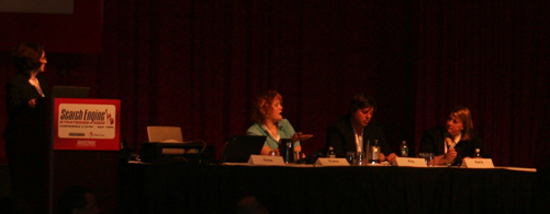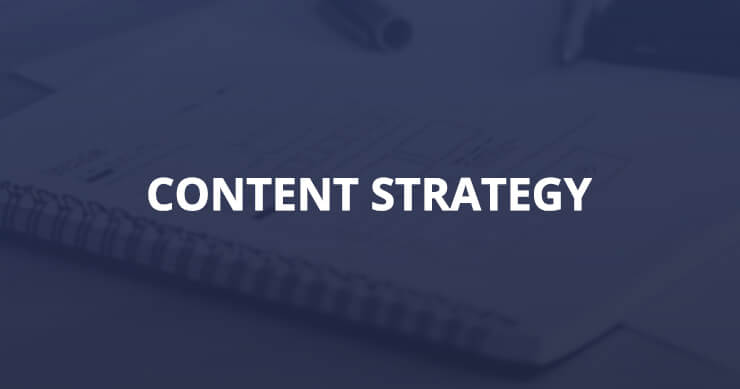I don’t know what song is currently playing, but it’s making me want to get up and twirl around in cirlces. Something about “after the rain is falling”. Okay, maybe not. I don’t know what the singer is saying. Do you think anyone would be against me dancing and rocking out while the session is going on? [bops anyway]
Okay, back to business. Pauline Ores is moderating speakers Liana Evans, Beth Harte and Rob Key. Woot Social Media. [goes back to dancing.]
Pauline is going to start us off with an intro.
A social media plan is more than meets the eye. It’s more than blogs and wikis, etc. There’s a lot of talk about social drivers and how to build a network community. You get out of social media what you put into it. The real value is not Guy Kawasaki, it’s business transformation. It’s about integrating social media into the workflow.
We’re facing a radically different marketing landscape. There used to be only so many magazines, only so many television stations, etc. It was easier. Competition was minimal. People found ads interesting/amusing/helfpul. In the new age, everyone’s attention is really fragmented. Budgets are reduced and competition is overwhelming.
We live in a marketing paradigm. We have a client, they go to an ad agency and they buy ads and media. Now we have an active citizen. They’re doing social media content. People have created 55 trillion links, as of December 2007. This is not insiginicant. Marketing is trying to put ads and media into that space. People want to talk to someone who really knows what’s going on. They talk to Zappos because they want to know where their shoes are and they know Zappos is paying attention. There’s a whole new piece there.
Up first is Liana. She looks awesome, BTW. I’m secretly coveting her shirt.
Social media will get you eyeballs but are those eyeballs interested? Are they engaged? Are they looking at your product? It’s good your getting traffic, but is it really helping you?
Then you have links. Links are a byproduct of social media. If you’re in it just for links, you shouldn’t be doing social media. It’s a waste of your time because it’s resource intensive. SEOs love links, but that’s not what’s first in social media. It’s about what the end user really wants.
[She shows a screenshot of Barack Obama’s SERP. It’s filled with social media profiles. ]
You want conversions, but that’s not an immediate lift. They’re not going to come directly from Facebook and buy a pair of shoes. You’re not getting that immediate click through value. You have to value success differently.
What’s Next?
With search, we have this whole blended search thing. You have to understand that these search engines are taking signals from social media. They’re looking at reviews and how many comments a video has or how many times it’s been viewed. They’re looking at Flickr. Marissa Mayer said that the 10 blues links are dead. You have to think about what you’re giving the end user through your social media experience.
It is not about your message. People don’t care about you. They don’t want to be marketed at. They want to share their experiences with you. They want to talk about how great their coffee was. It’s about them talking about you. It’s the end user at the end of the day. Even if you have some control, you don’t have full control. Users are having conversations. They’re talking about you even if you don’t know they’re talking about you. Are you going to be part of that conversation or are you just going to watch it happen? Plan to be part of that conversation. People want to share things. They want to share their videos and their photos. A lot of companies are taking advantage of that by using user videos and photos as part of contests.
It’s not just about Digg. There are forums out there. That’s the oldest social media avenue. They’re not dead. You have video sharing sites. YouTube is the second largest search engine out there. They go there more than Yahoo. The search engines are looking to see if a review is more relevant than a page about that product. She shows a search on Twitter for [hotels new york city] and how big brands are engaging and being social. That’s awesome.
You need to start thinking beyond Googlebot. It’s mobile searches. It’s Yelp. It’s iPhone applications. You need to know where your audience is so you know where to launch your social media strategy. It needs to compliment your SEO and PPC strategy. You need to listen and engage and then converse. Understand how people are talking about you, just not what they’re saying. Watch to see what’s working and then rinse, wash, repeat.
You need to have the SEO fundamentals in place. Know where your audience is in social media. Define your goals and measure. Tweak what isn’t working and try again.
Beth is up.
She says she’s a social media purist, meaning she focuses on the conversation and not the SEO benefit. I love her already.
The current role of a PR person is research, consultant, pitcher, etc. PR people only focus on media. They spam the media with things they don’t really care about. They don’t personalize the content. There have demanding clients who want to be in the Wall Street Journal. But times are changing.
It’s no longer about the journalist. You need outreach to your customers and all your audience members. You have to talk to your brand evangelists. PR people are used to two-way conversations so they’re perfect for social media. They just need to learn how to use it.
PR Issues/Challenges: PR folks continue to want to be the mouthpiece for the client. They want to do the ghostblogging. They want to ghost comment. They want to control the message, however, they don’t understand blogger relations and they can damage their client’s brand that way. They try to push a conversation and it doesn’t work that way.
How to get started with PR 2.0: Listen
She talks a bit about Dell Hell. You need to know where to listen. Know all the different online vehicles and analyze them for tone. Don’t talk. LISTEN. There are a ton of sites to help you listen: Google Alerts, Technorati, Co.mments (I thought that site was dead? I guess not.), SERP, etc. Once you listen, your role starts to change. You’re a benchmarker. You’re the ears and the eyes. You’re a change agent, a connector, an advocate, a backbone and a linker. [I absolutely LOVE this description of a company’s objectives in social media. This is what’s been missing from EVERY OTHER conference social media panel.]
How to Get Started
Start with a plan. Create goals and objectives. Bring all your listening devices into one place.
She talks about The Social Media News Release that allows people to create the story around you. This press release doesn’t go over the wire. This is for the taking. It doesn’t move unless someone picks it up and takes it somewhere else. That’s a huge mind shift for a lot of people.
But this kind of release isn’t going away. You need to make them searchable. Use keywords. Make it shareable. Have an RSS feed. Go beyond who, what, where, when, and how and tell an engaging story. Don’t just give facts. Social media news releases let bloggers and journalists tell their own story.
What does this mean?
A PR person is no longer a media relations person. They need to understand digital tools. They have to be strategic, to understand WOM, events and how it all comes together.
Beth was awesome. We need more people like Beth on these social media panels. Social media is not just about building links and it’s really sad when that’s all speakers make it out to be. Awesome. /rant
Last up is Rob.
The struggle among the big agencies is that they’re used to the traditional funnel. What we’ve had emerge is a new model about the art of forgetting. If you’re observing the British military (er, what?), they have a person who stands behind the artillery holding their fist out. If you ask them why, they just say thats how they’ve always done it. Even that that person hasn’t been needed for years. (Something to do with holding the horses. I don’t know.)
Listening has now become a marketing discipline. It’s an essential element for all campaigns. It’s not a “nice to do” anymore. It’s about the power of the ideas and the great equalizer. Social media is a primary driver of organizational information that transcends marketing communication. It’s not easy and culturally it can be very difficult for some organizations. Social media transcends marketing disciplines and most brands are not organized effectively to act.
Developing Social Media Strategy
A social media engagement strategy enables companies to proactively and ethically engage in the proliferating consumer generated media drivers to inform, educate, influence and engage. It utlizes an integrated communications approach that transcends traditonal marketing discipline definitions. It requires new ways of measurement beyond the traditional direct metrics. It must come from the inside out.
There is a process.
- Listen
- Organize
- Engage
- Measure/Optimize
Social media has forced marketers to be human again. They’ve had to relearn how to talk to people.
There’s a difference between conversation monitoring and conversation mining. The latter is about looking at the greater, deeper insights. There’s a next generation of listening that needs to take place. You want to get multi-level sentiment.
Social media is becoming the engine of organizational transformation. Recognition that social media is not just a marketing/communications issue, but an organizational issue. Who owns it? How do you infuse listening across the organization? How do you make listening actionable? Who needs to be trained and how?
You need to understand nuances and create policies. That means blog policies, comment policies, personal vs business, wikipedia engagement, how to handle negative comments, legal reviews, the WOMA Code of Ethics, etc. If you go through that process, a lot of the negative effects are reduced.
Infrastructure: What conversation assets do you have? What do you need? What third party apps do you have and what do you need?
- Engage with the right philosophy
- Participate and learn
- Make friends with elders
- Undesrtand and respect community mores
- Lead with altruism, come bearing gifts
- Discover a community need
- Learn the linguistics
- Value and cultivate the relationsihps
- Leverage appropriately…over time
What do you measure?
- Changes in the conversation
- Cost per action — signup, view video, app usage, sales, etc
- Downstream behavior
- Correlative impact for eventful econometric modeling
And we’re done. Two more sessions left!


